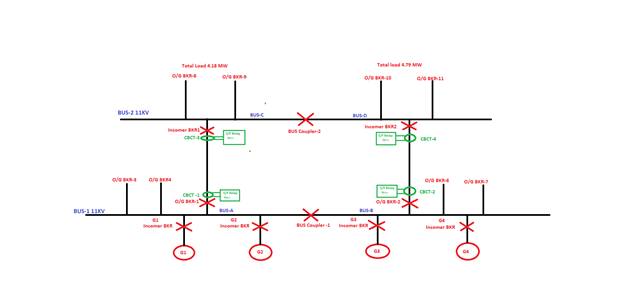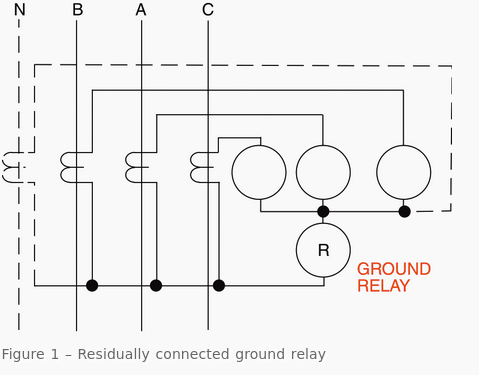Dear All,
We have two 11KV BUS's BUS 1 & 2, In BUS-1 there are two sections BUS-A & B. Same two sections BUS C & D are there in BUS-2.
In BUS 1 the BUS coupler is always closed position(for closing using synchroscope) & BUS-2, BUS coupler keeping always Open condition. BUS-2 getting power through BUS C incomer BKR 1 & BUS-D from Incomer BKR2.
Since the BUS coupler-1 is closed position & as per i understand the voltage at BUS-C & BUS-D should be same. Also we verified the voltage across BUS coupler -2 with HV sticks, there were no any voltage difference found.
In this scenario the BUS coupler -2 can closed without synchronization, i think that's why we don't have synchroscope installed on this BUS coupler-2.
when we tried to close BUS Coupler-2 with following conditions,
1. BUS Coupler -1 Close position.
2. O/G BKR-1 & Incomer BKR-1 Close position.
3. O/G BKR-2 & Incomer BKR-2 Close position.
when we were closed BUS Coupler -2 same time following BKR's tripped on Earth fault,
1. O/G BKR-1 & Incomer BKR-1 Close position.
2.O/G BKR-2 & Incomer BKR-2 Close position.
For earth fault protection for O/G & I/C BKR 1 & 2 cables are equipped with CB C.T(Core balancing). CB CT ratio is 50/1 & settings is 7.50 Amp with 500 ms.
Running load on BUS-C is 4.18 MW & BUS-D is 4.79 MW. I don't think this difference of active power can cause of this issue. 
Please find the attached SLD of our switchgear. Kindly please go through the above case & share your valuable comments.


